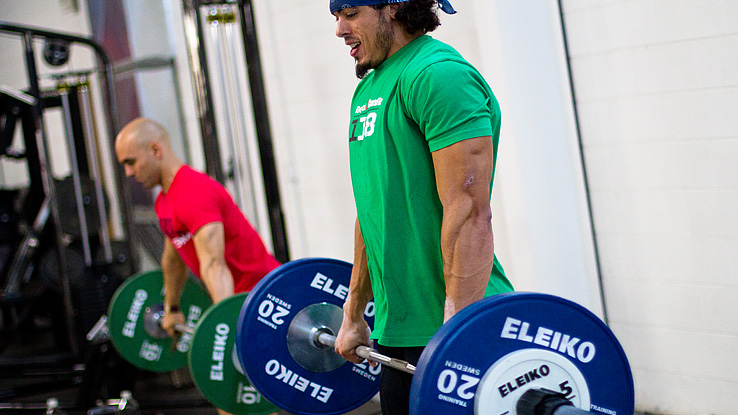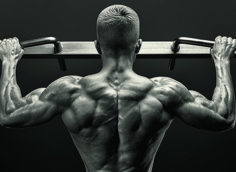The Deadlift: First Steps
The deadlift is a foundational movement every person should do. We should all have the ability to lift a heavy object off the ground. Here's how to get started.
Stance and Position
For the conventional deadlift, keep your feet directly under the hips with the outsides of your feet lining up with the outsides of your hips. While individual anatomy will determine your ideal stance, a narrower stance is better than a wider stance for most people. A narrower stance allows you to keep your knees tracking out instead of collapsing in.
Keep your chest up, engage your lats, and hinge at the hips with a slight knee bend.
Get a Grip!
Grip the bar right outside your legs. A closer grip is better than a wider grip because you're in a more powerful position and have a more efficient (shorter) bar path. The most common grip is the alternate or mixed grip – non-dominant hand overhand (pronated), dominant hand underhand (supinated).
You can also use a double-overhand hook grip. Loop your thumb around the bar first, then tightly wrap your fingers around your thumb and the bar. This grip is uncomfortable for some, but it's very secure. Another advantage of the double overhand hook grip is that it prevents imbalances/asymmetries in your hips/back that can occur over time with the alternate grip.
If you want to remove your grip as a limiting factor, use lifting straps. But if you compete in powerlifting or CrossFit, use lifting straps strategically so you don't compromise overall grip strength. Lifting straps generally allow you to lift heavier weights and perform more reps.
When lifting the bar, think about the legs pressing the weight up while keeping the bar close to your body at all times.



